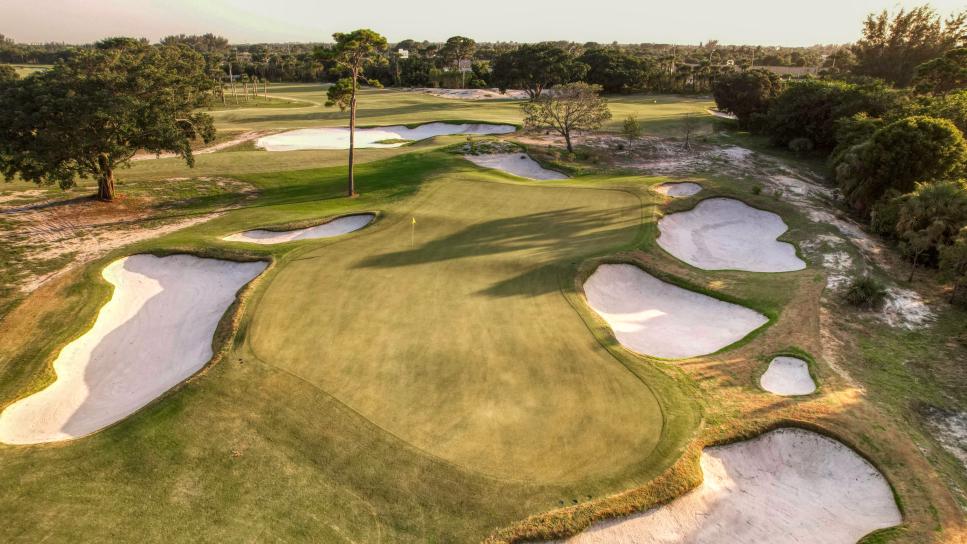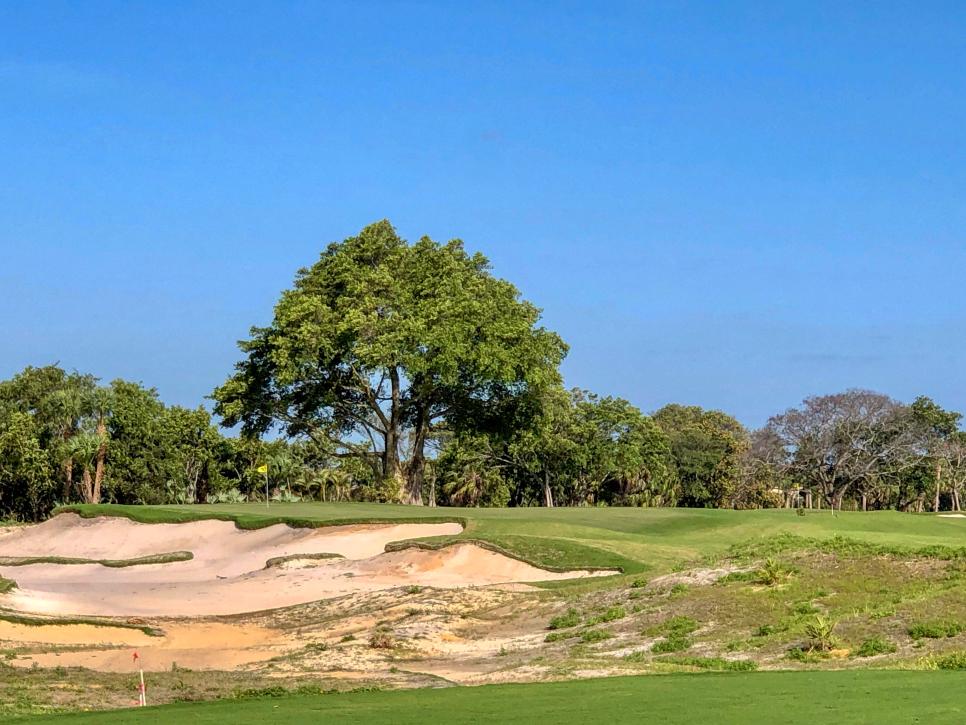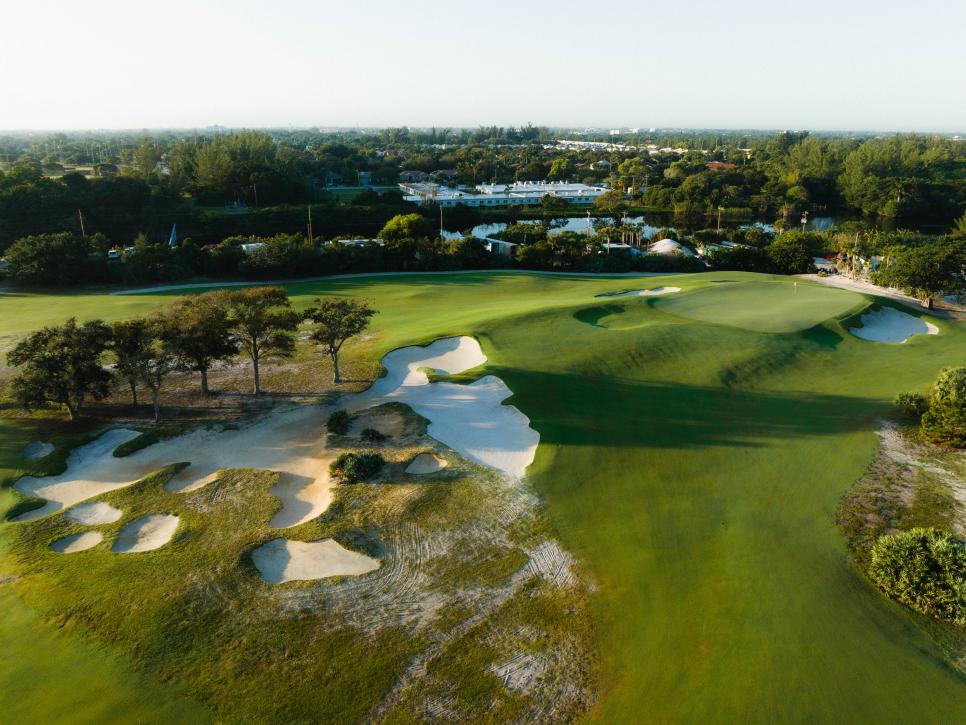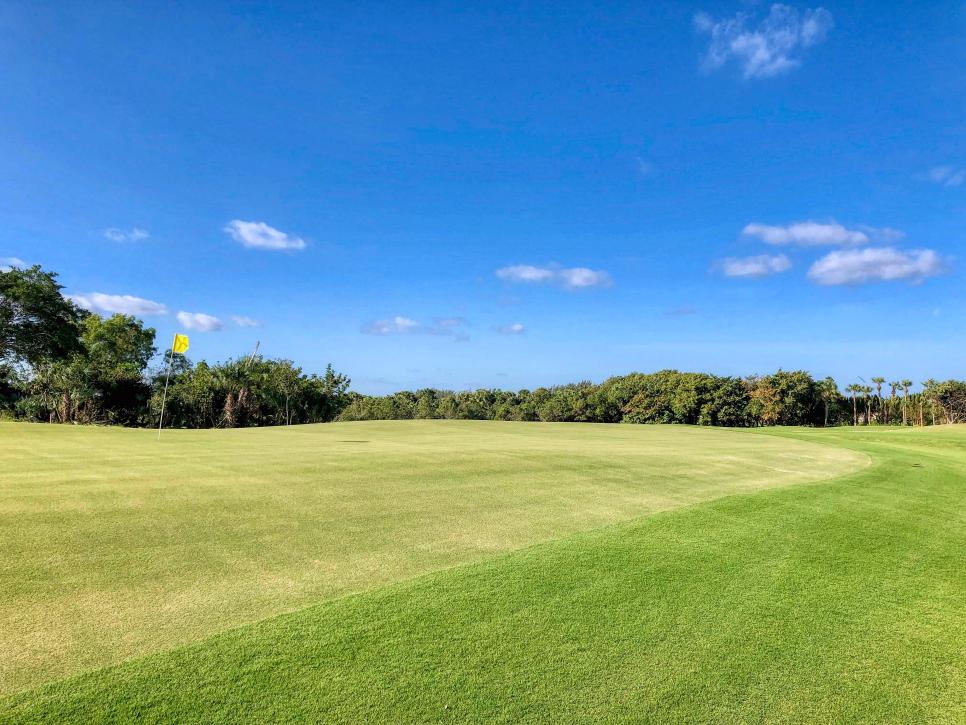What it's all about
The Park West Palm is golf's newest hang—a Gil Hanse-designed course open to the public

Trey Wren
In the current age of new elite private clubs like Gil Hanse and Jim Wagner’s Ohoopee Match Club in Georgia and Tom Fazio’s Congaree in South Carolina, and destination resorts like Bill Coore and Ben Crenshaw’s Sheep Ranch at Bandon Dunes and David McLay Kidd’s Mammoth Dunes at Sand Valley, the opening of a public municipal-affiliated golf course in an urban area is major news. It’s even bigger news when Tiger Woods shows up to christen it.
Woods visited The Park in West Palm Beach in late March to help introduce the new course and hit the ceremonial first tee shot. The course began preview play several weeks earlier, and opens officially to the public April 17, but Woods' surprise appearance will likely be the lasting memory of The Park’s debut.
The Park is the latest in a growing trend of public/private partnerships that have fueled the redevelopment of numerous municipal courses around the country. The new course is set on the site of the former Dick Wilson-designed West Palm Beach Golf Course, one of the first notable designs of the post-World War II years when it opened in 1947 and long considered among the top municipal courses in the country.
That course closed in 2018 due to deteriorating playability and diminished interest and sat fallow for several years. Several plans for different uses of the land were proposed before a group of local citizens, led in part by Seth Waugh, CEO of the PGA of America, raised $56 million in individual donations to re-imagine the property as a community gathering space with amenities that include, in addition to golf, youth activities and educational programs, shopping and dining. Woods was one of the donors. (Note: the PGA of America is not connected to the project.)
“From the beginning the goal has been to make The Park into the happiest, most welcoming, most complete, and most inclusive place in all of golf,” Waugh told those in attendance. “We love the idea of ‘Open Golf.’ We wanted to call it The Park because this is 190 acres owned by the residents and, like a park, it should be open to all. We have the abiding view that if we can help to make the game look more like the world, then just maybe the world will adopt some of the core values of the game.”
The fundraisers and City of West Palm Beach hired Hanse and Wagner to create a new 18-hole course on the property’s existing site, located just off I-95 less than two miles south of the Palm Beach International Airport. Also included in the redevelopment is a state-of-the-art practice facility, a lighted nine-hole short course and a two-acre children’s-only golf zone.

The par-3 17th.
Derek Duncan
Hanse and Wagner retained nothing of the Wilson course and originally envisioned using its deep, sandy terrain to craft holes that would look and play like the Sand Belt courses of Melbourne, Australia. In routing the course, however, they removed pockets of trees, palmetto and other vegetation—crucial ingredients of Sand Belt courses—that would have enhanced that effect.
“There are certain parts of the golf course where you get that Sand Belt feel—I hear the comparison a lot on 11, the par 3, and No. 6, the short par 4—but as Jim and I started to go through it we discussed how we were going to differentiate this golf course from some of the other things we’d done,” Hanse says. “We started to move away from the Sand Belt look and go more toward exposed sand areas because of the scale and width that we had.”
The width, exposure and sightlines that were created once the land was cleared came to define the design’s concept, specifically fairways of enormous breadth, greens that are shaped or oriented to receive shots from specific points in the fairways, and highly contoured putting surfaces.
“One of the cool things Tiger said when he was here, and he’s been by a few times, was this is a ‘one-ball course’—you’re not going to lose a ball out here,” Hanse says.
The first nine plays through the calmer eastern half of the site, with little elevation change and sandy transitions separating holes rather than rough. The standouts are the sublime par-4 second with a low, thin green best approached from the left where a troublesome bunker lurks, and the short par-4 sixth with a small, shallow two-level green guarded by a pot bunker—whether the hole is cut on the upper right section or lower left will dictate where the drives should be place. The seventh is a sweeping reverse Redan that falls off on the right.

The Redan par-3 seventh.
Trey Wren
The second nine cranks up the intensity beginning with the second shot at the 10th, turning the corner of a sharp dogleg and playing down into a green set in a hollow. This begins a string of fascinating holes full of peril and possibilities that cruise up and down the sweeping grades of the property’s west side, including the gorgeous par-3 11th with a deep multi-tiered green flanked by five deep bunkers that would indeed be at home in Melbourne, followed by the uphill, dogleg left 12th flowing into a punchbowl green.
The following mid-length par 4 is a hole Hanse had pegged from the beginning. It rides across a canted section of land that falls left to right toward an exposed green set atop the crown of a dune that falls away in all directions. The only way to attack the hole is from the high side by challenging the sandscape along the ridge.
“There are certain holes where you just go, I’ve got that one,” says Hanse. “In my mind, the 13th was clear as day. It was like, 'just leave me alone over here, I’m going to go work on it.' ”
“I love the width, and I’m a big fan of fairways that tilt where you’ve got to hit a certain section of it, and at 13 if you hit the right 30 yards of that fairway, you’re going off. I don’t think in general modern architecture uses that enough.”

The bare, crowned green at the par-4 13th.
Credit for much of the design goes to Dirk Ziff, one of the founders who first met Hanse and Wagner in 1994 when they were renovating his club, Fenway Golf Club, in Scarsdale, N.Y. Hanse quickly came to appreciate Ziff’s architectural acumen during that project, and they became lasting friends and colleagues. At The Park, Hanse had attempted to route the course around holes like the 13th, but the puzzle of how to sequence other holes seemed elusive. Ziff, who lives in the Palm Beach area, asked if he could try.
“Dirk asked if he could take a shot at the routing, and Jim and I said, sure,” he recalls. “If it was bad, we could always change it, but damn if he didn’t come back with a routing that was exactly what we built. It was so good.”
“I’d tried multiple times to disassemble it, put it back together, do this and that, but at the end of the day all we did was push some holes a little farther apart for safety, and there were a few technical things. But it was the routing we’re using.”
Though The Park appears wide open off the tee, there is nuance to the hole strategies and angles of approach that will only be revealed through repeat play. These include the uphill 15th, a short par 5. The second shot plays over a dune and only the flagstick is visible for those that want to go for the long shot home. The green, however, is pitched almost 90 degrees to the direct line of play. Though not visible, there’s 50 yards of fairway out to the right, leaving a short pitch into the full length of the green for those with local knowledge.
One potential cause for concern will be pace of play. There’s no water on the course, but some of the bunkering is deep and severe. The bunker protecting the front and left side of the par-3 17th, on the extreme, sits eight feet below the putting surface. High handicap players will struggle to extricate their ball from it, so they’d best learn to play shots out to the right where there’s plenty of grass.
Hanse isn’t concerned about the bunkers being too penal.
“We wanted to build the best golf course we could,” he says. “We wanted to build meaningful bunkers, because we felt like we gave everybody enough room to play, and there are different ways to play around those bunkers. But the hazards needed to be meaningful in order to promote that thoughtfulness that’s so important to good golf.”
The Park is still raw and mature plantings and some sparsely arranged trees in the buffer zones will add aesthetic texture and contrast. But you won’t find many public courses that offer the combination of playability and deep strategic complexity, nor a set of greens that possess enough movement that hole locations impact the way they should be played. The ingredients are present for it to be not just an entertaining round of golf but a place to linger and hang out.
Rates for West Palm Beach residents begin at $60. Green fees for Florida residents will begin at $160, and out of state rates are $220.

